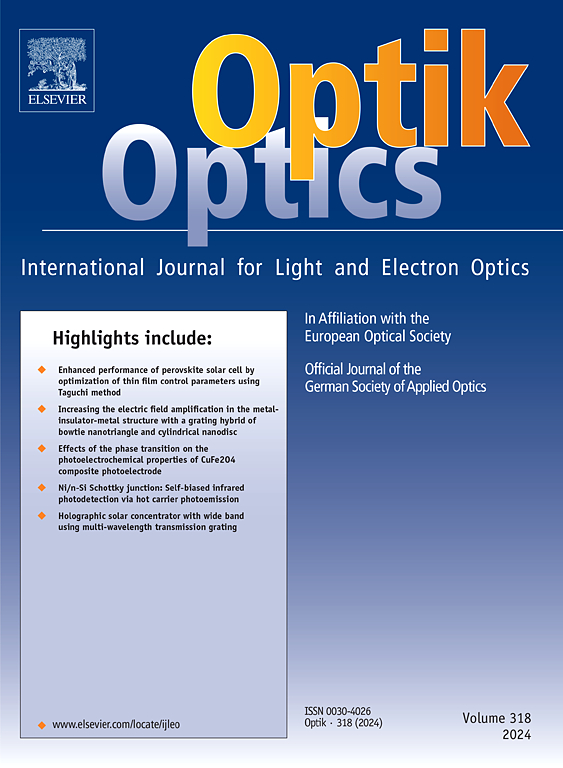基于矢量像差理论的大相对孔径离轴反射系统设计
IF 3.1
3区 物理与天体物理
Q2 Engineering
引用次数: 0
摘要
离轴反射光学系统具有无色差、工作光谱范围宽、适用于大口径、结构紧凑等特点。这些特点极大地推动了空间遥感技术的发展。随着应用需求的不断发展,对空间遥感器获取范围更广、信息更详细的光学遥感数据的需求日益增加。这一趋势对光学载荷的成像视场、相对孔径、成像质量、能量集成等技术参数提出了更高的要求。为了解决这些问题,本文提出了一种改进的COOK离轴五镜系统的设计。这是通过结构选择和直接设计,基于矢量像差理论应用于无遮挡离轴反射系统的初始结构。经过调整和优化,设计的光学系统的调制传递函数超过[email protected] lp/mm,而48μm×48μm区域内的能量积分超过0.94。光学系统成像质量明显提高,满足系统技术指标要求。所设计的系统可以同时实现大视场、高能量利用率和低杂散光,可以大大提高空间光学系统的设计效率。本文章由计算机程序翻译,如有差异,请以英文原文为准。
Design of large relative aperture off-axis reflective system based on vector aberration theory
The off-axis reflective optical system exhibits characteristics such as the absence of chromatic aberration, a wide operational spectral range, suitability for large apertures, and a compact structure. These features significantly advance the development of space remote sensing technology. As application requirements continue to evolve, there is an increasing demand for space remote sensors to acquire optical remote sensing data that encompasses broader ranges and contains more detailed information. This trend imposes higher demands on technical parameters including imaging field of view, relative aperture, imaging quality, and energy integration of optical payloads. To address these challenges, this paper presents the design of an improved COOK off-axis five-mirror system. This was achieved through structural selection and direct design based on vector aberration theory applied to the initial structure of an unobscured off-axis reflective system. Following adjustments and optimization processes, the modulation transfer function of the designed optical system exceeds [email protected] lp/mm, while energy integration within a area surpasses 0.94. The imaging quality of the optical system is significantly improved, which meets the requirements of the system’s technical indicators. The designed system can achieve a large field of view, high energy utilization and low stray light simultaneously, which can greatly improve the design efficiency of the space optical system.
求助全文
通过发布文献求助,成功后即可免费获取论文全文。
去求助
来源期刊

Optik
物理-光学
CiteScore
6.90
自引率
12.90%
发文量
1471
审稿时长
46 days
期刊介绍:
Optik publishes articles on all subjects related to light and electron optics and offers a survey on the state of research and technical development within the following fields:
Optics:
-Optics design, geometrical and beam optics, wave optics-
Optical and micro-optical components, diffractive optics, devices and systems-
Photoelectric and optoelectronic devices-
Optical properties of materials, nonlinear optics, wave propagation and transmission in homogeneous and inhomogeneous materials-
Information optics, image formation and processing, holographic techniques, microscopes and spectrometer techniques, and image analysis-
Optical testing and measuring techniques-
Optical communication and computing-
Physiological optics-
As well as other related topics.
 求助内容:
求助内容: 应助结果提醒方式:
应助结果提醒方式:


